Venezuela is a country in northern South America bordering the Caribbean Sea. The Andes Mountains are located in the western part of the country, the Amazon basin is in the south and the largest lake in South America, Lake Maracaibo, is in the northwest. There is a variety of ecosystems in the Venezuela providing habitats for thousands of species including a unique variety of bird species. Choosing just one as your national bird had to be difficult for a country with some of the most beautiful birds in the world. Read on to find out all about the national bird of Venezuela!
What is the National Bird of Venezuela?
The national bird of Venezuela is the troupial. Troupials are songbirds that are related to oriole. Their bright orange chests that contrast with their black heads are easy to spot. They have a yellow eye and blue marking behind their eye. Their head, wings and tail feathers are black and their chest feathers are bright orange. A white stripe crosses each wing. Troupials are sometimes described as bulky or big-headed and can get to be around 9 inches long. They have a reputation of being fierce defenders of their nests and will noisily defend their territory.
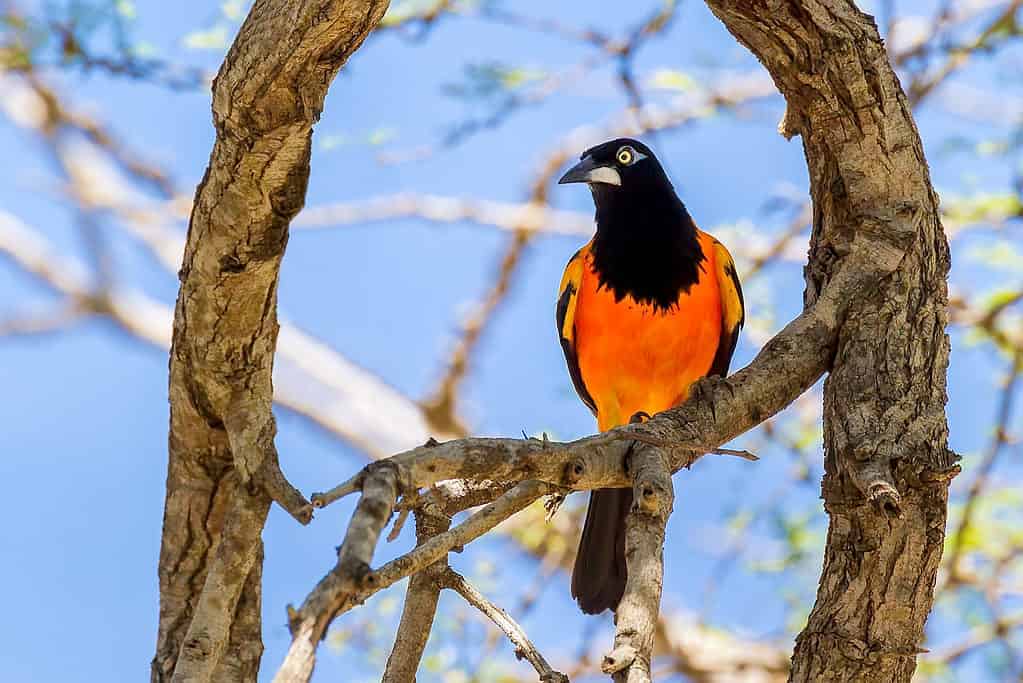
Troupials live in nests but they don’t build nests, they steal them!
©Ben Schonewille/Shutterstock.com
Where do Troupial Live?
Troupials live in Venezuela, Columbia and several Caribbean Islands including Puerto Rico. In Venezuela they are mainly found in the northern and northwest areas. They live in savanna, forest, shrubland and can be found around humans in gardens or pestering fruit plantations (they love fruit). Troupials live in nests but they don’t build nests, they steal them! They either find an abandoned nest of another bird or will challenge birds and take over their nests. If there are eggs left in the nest, they will eat them. Once they have secured their nest you better not mess with them, they will protect their nest by all means.
Is the Troupial on the Venezuelan Flag?
No, the troupial is not on the Venezuelan flag. The flag is tricolored with three equal horizontal stripes of yellow, red and blue. Eight small white stars make an arc in the center of the blue stripe. The flag was first flown over Venezuela on August 3 and since 2006, August 6th has been the national Flag Day. The flag of Venezuela looks very similar to the flag of Columbia with the exception that the Venezuelan flag added the eight arched stars to the center. These stars each represent one of the provinces of the country.
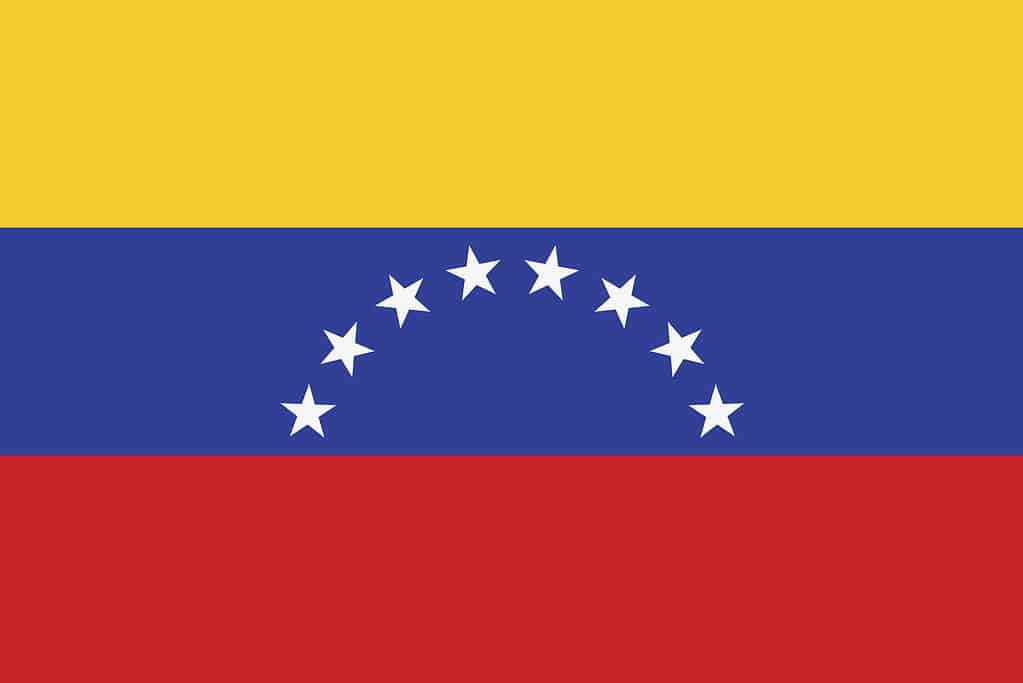
The Venezuelan flag The flag of Venezuela is a horizontal tricolor of yellow, blue, and red, with eight stars at the center of the blue stripe.
©iStock.com/-Panya-
Is the Troupial Featured on the Venezuelan Money?
Yes! The latest 2018 banknote series features the troupial on the back of the 500 bolívares, but even more interesting is the back of all of the banknotes feature one of the amazing animals in Venezuela. Here is a list of the wildlife featured on the Venezuelan bolívares:
- 2 bolívares: Yellow-crowned Amazon parrot (green parrot with a yellow crown)
- 5 bolívares: Veragua stubfoot toad (almost extinct, but a few populations remain)
- 10 bolívares: Giant anteater (they can get to be 6-8 feet long and weigh 60-100 pounds!)
- 20 bolívares: Jaguar (listed as “near threatened” and declining in population)
- 50 bolívares: Cunaguaro (Northern tiger cat, small spotted wild cat)
- 100 bolívares: Brown spider monkey (considered critically endangered)
- 200 bolívares: Military macaw (large green parrot with blue-tipped wings and red markings behind the beak)
- 500 bolívares: Venezuelan troupial (the national bird of Venezuela)
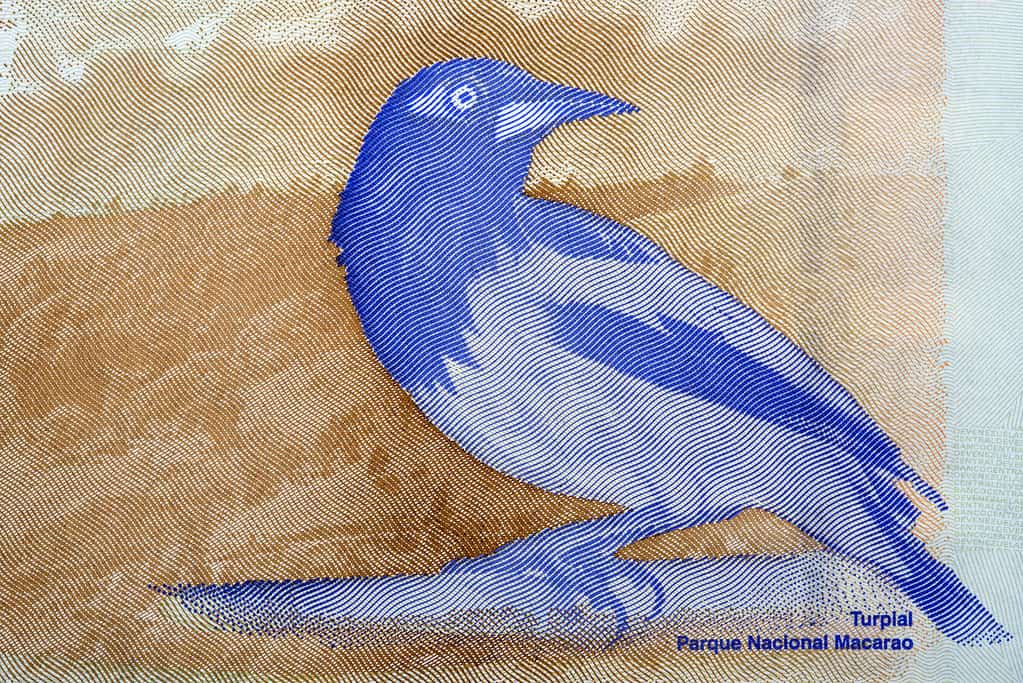
Yes! The latest 2018 banknote series features the troupial on the back of the 500 bolívares.
©Janusz Pienkowski/Shutterstock.com
What other Animals live in Venezuela?
The biodiversity in Venezuela is absolutely incredible, especially with such a variety of habitats. Let’s look at some of the other animals that live in Venezuela:
Andes Mountains
In the mountainous regions of Venezuela you will find large mountain tapir, the Andean (spectacled) bear, llama-like Vicuña and the Andean condor (which has a wingspan of 8-10 feet).

The tapir uses its nose for pulling vegetation and fruits from hard-to-reach places.
©Janusz Pienkowski/Shutterstock.com
Amazon rainforest
The southern edge of Venezuela is in heavy forest and has a wide variety of animals. You can see (and hear) howler monkeys, colorful macaw and slow-moving sloths. A couple of “giant” animals live (and grow) in the forest like the giant anteater and giant otter. Capybaras don’t have the word “giant” in their name but they are the world’s largest rodent. The forests of Venezuela are home to hundreds of colorful bird species as well.
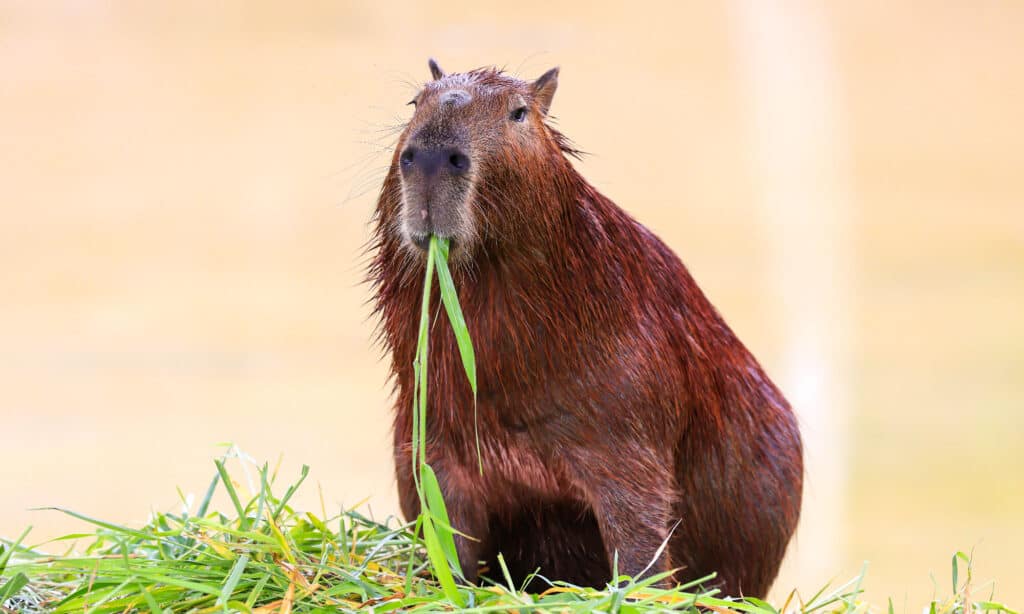
Capybaras are the largest living rodent native to South America.
©BeautifulPicture/Shutterstock.com
Lake Maracaibo
This lake is technically a lagoon connected to the Gulf of Venezuela giving it more salinity than many freshwater lakes. Here you will find two rare animals, the Amazon River dolphin (sometimes called the pink dolphin) and the West Indie manatee. One of the problems with Lake Maracaibo is that it is a prime location for oil and gas making it one of the largest oil export ports. Despite the leaking oil affecting the wildlife, fishing is still a popular occupation.
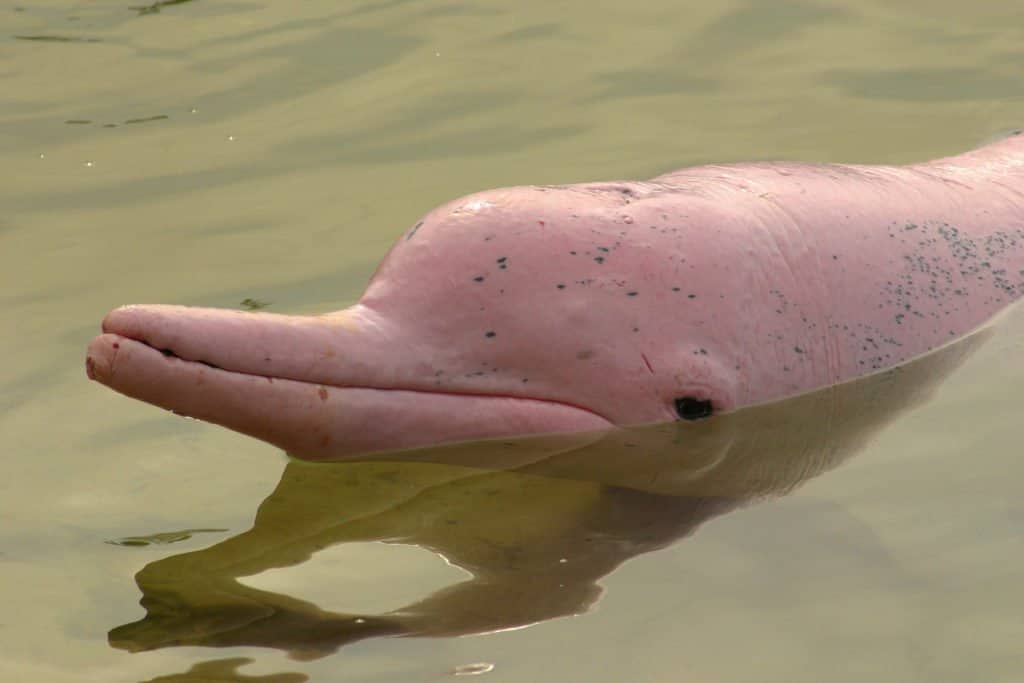
Here in Lake Maracaibo, you will find two rare animals, the Amazon River dolphin (sometimes called the pink dolphin) and the West Indie manatee.
©Ivan Sgualdini/Shutterstock.com
Honorable Mention
Los Olivitos Refuge is where you will find thousands of flamingoes! These long-legged wonders look absolutely stunning in a field of thousands together. The species of flamingo found here is the Caribbean flamingo.
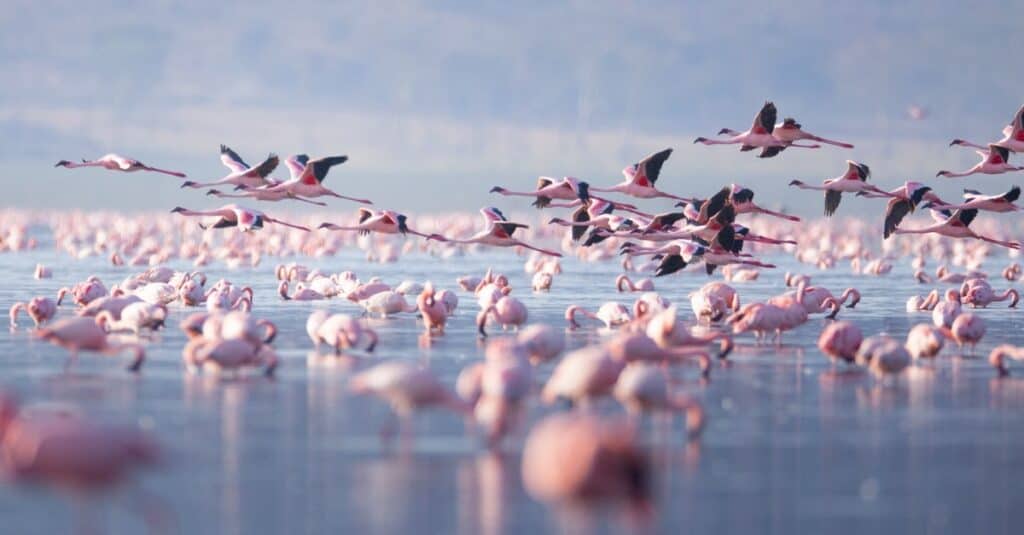
Los Olivitos Refuge is where you will find thousands of flamingoes!
©iStock.com/mantaphoto
What Animals live off the Coast of Venezuela?
The Morrocoy and San Esteban National Parks have some of the most elaborate coral reefs in Venezuela. The parks are located off the western coast. The reefs around the Caribbean islands may have better access for divers and snorkeler with clearer water and easier access. You might see queen angelfish, butterfly fish, sea anenome, stingrays and nurse sharks. Further out you may see humpback whales, pilot whales and bottlenose dolphins. Did you know humpback whales can get to be 49 feet long! A pretty impressive sight! If you are lucky you may encounter one of the endangered sea turtles like the hawksbill. The hawksbill sea turtle is a feature on the back of the previous banknote of the 5,000 bill.
Is the Troupial an Endangered Animal?
No. The Venezuelan troupial is not an endangered animal. They have a large range across the northern South America and healthy populations on several Caribbean Islands as well. After evaluation by the IUCN in August of 2018 they are an animal of “least concern” which is great news for the people of Venezuela and their national bird.
Up Next
- The Top 10 Incredible Animals that Live in Coral Reefs
- Types of Tropical Birds
- Countries with Striped Flags
The photo featured at the top of this post is © Natalia Kuzmina/Shutterstock.com
Thank you for reading! Have some feedback for us? Contact the AZ Animals editorial team.






